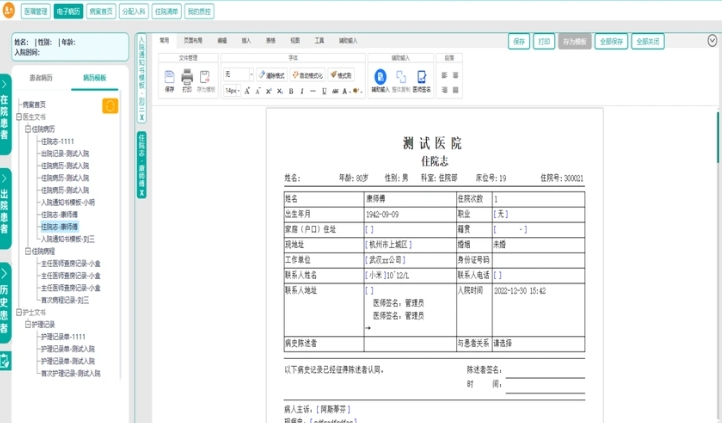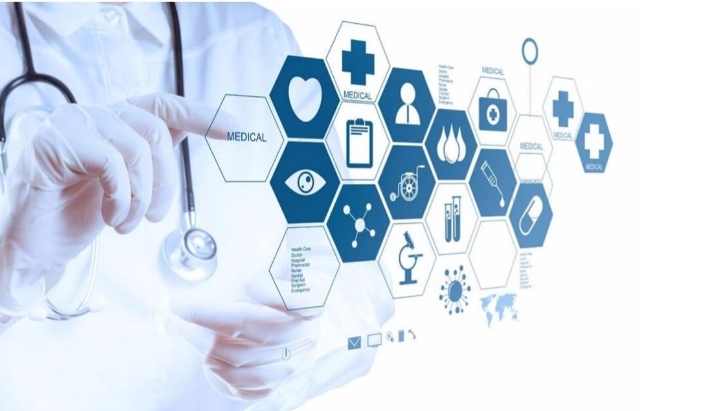Case Study on Software Development in the Healthcare Industry
- latest articles
- 1.DApp Development & Customization: Merging Diverse Market Needs with User Experience 2.Analysis of the Core Technical System in DApp Project Development 3.How to achieve cross-chain interoperability in Web3 projects? 4.How does the tokenization of points reconstruct the e-commerce ecosystem? 5.How to Set and Track Data Metrics for a Points Mall? 6.What is DApp Development? Core Concepts and Technical Analysis 7.Inventory of commonly used Web3 development tools and usage tips 8.Development of a Distribution System Integrated with Social E-commerce 9.Six Key Steps for Businesses to Build a Points Mall System 10.What is DApp Development? A Comprehensive Guide from Concept to Implementation
- Popular Articles
- 1.Future Trends and Technology Predictions for APP Development in 2025 2.Analysis of the DeFi Ecosystem: How Developers Can Participate in Decentralized Finance Innovation 3.From Zero to One: How PI Mall Revolutionizes the Traditional E-commerce Model 4.DAPP Development | Best Practices for Professional Customization and Rapid Launch 5.Recommended by the Web3 developer community: the most noteworthy forums and resources 6.How to Develop a Successful Douyin Mini Program: Technical Architecture and Best Practices 7.From Cloud Computing to Computing Power Leasing: Building a Flexible and Scalable Computing Resource Platform 8.Shared Bike System APP: The Convenient Choice in the Era of Smart Travel 9.How to Create a Successful Dating App: From Needs Analysis to User Experience Design 10.From Design to Development: The Complete Process of Bringing an APP Idea to Life
With the rapid development of information technology, the healthcare industry is undergoing an unprecedented digital transformation. The application of medical software not only improves hospital management efficiency but also changes the working methods of doctors, the patient healthcare experience, and the operational model of the entire healthcare ecosystem. This article will analyze the practical applications of software development in the healthcare industry through several real-world cases, exploring the challenges and opportunities in medical software development, as well as future trends.
I. Current Status and Needs of Healthcare Industry Software
In the healthcare industry, software development applications are mainly concentrated in the following areas:
Electronic Medical Records (EMR) and Electronic Health Records (EHR)
Hospital Information Systems (HIS)
Telemedicine and Health Monitoring
Clinical Decision Support Systems (CDSS)
Pharmaceutical Management Systems
Intelligent Medical Device Software
Each area has different technical requirements, involving data storage and processing, system integration, user interface design, and more.
For example, Electronic Medical Record (EMR) systems are currently one of the most widely used medical software applications, helping hospitals achieve digital management of patient information and improving diagnosis and treatment efficiency and accuracy. On the other hand, telemedicine systems utilize internet and mobile device technologies, enabling patients and doctors to communicate and conduct consultations without time or space constraints.
With the continuous advancement of technology, the demand for software in the healthcare industry is becoming increasingly diverse. Medical software development not only requires system stability and efficiency but also needs to consider data security, user privacy protection, and regulatory compliance.
II. Healthcare Industry Software Development Cases
1. Hospital Information System (HIS) Development Case
Background
A municipal hospital (hereinafter referred to as "Hospital A") faced multiple management and service challenges. Issues such as scattered patient information, non-transparent diagnosis and treatment processes, and incomplete medical records resulted in low management efficiency and poor patient experience.
Solution
To improve management efficiency, Hospital A decided to develop a comprehensive Hospital Information System (HIS), which included the following modules:
Patient Information Management Module: Records patients' basic information, medical history, examination reports, etc., ensuring information completeness and real-time updates.
Scheduling and Appointment Management Module: Implements doctor scheduling and patient appointments, reducing waiting times and improving doctors' diagnostic efficiency.
Financial Management Module: Automates the generation and management of patient bills, simplifying the payment process.
Statistical Analysis Module: Analyzes hospital operational data to support decision-making.

Through requirement analysis and development with Hospital A, the delivered system helped Hospital A achieve centralized management of patient information, improved diagnosis and treatment efficiency, and enhanced the patient experience. After the system went live, the hospital's management efficiency increased by over 30%.
Technical Analysis
During the system's development, the team used a microservices architecture to ensure high scalability and availability. For the database, a combination of MySQL and MongoDB was chosen to ensure data security and efficient storage. The system also integrated a mobile app for convenient patient appointments and inquiries.
2. Telemedicine System Development Case
Background
In remote areas, there is a severe shortage of medical resources, and patients face difficulties and high costs in accessing healthcare. To alleviate this issue, a medical technology company (hereinafter referred to as "Company B") decided to develop a telemedicine system, allowing patients to consult with doctors online via the internet.
Solution
The telemedicine system developed by Company B included the following key features:
Video Consultations: Patients can conduct video calls with doctors via mobile devices for face-to-face online consultations.
Medical Record Management: Patients can upload their medical records to the system, allowing doctors to review their history and provide personalized treatment recommendations.
Medication Delivery: Through partnerships with pharmaceutical supply chains, the system enables online medication ordering and delivery, allowing patients to receive drugs quickly.
Intelligent Health Monitoring: The system supports real-time health data monitoring via wearable devices (e.g., smart bands) and provides health recommendations based on the data.
The launch of the telemedicine system significantly addressed the healthcare access issues in remote areas and provided convenient medical services for busy urban populations.
Technical Analysis
The core technologies of the telemedicine system are video communication and real-time data processing. The system adopted the WebRTC protocol for video communication, ensuring stable and clear video calls. Additionally, it integrated artificial intelligence technology to provide intelligent diagnosis and health analysis, further enhancing doctors' diagnostic efficiency.
3. Clinical Decision Support System (CDSS) Development Case
Background
In modern healthcare, doctors need to process vast amounts of medical data, such as examination reports, patient medical history, and symptom analysis. In this context, assisting doctors in making more accurate diagnoses has become a key focus in medical software development.
Solution
A well-known medical software company (hereinafter referred to as "Company C") collaborated with a large hospital to develop a Clinical Decision Support System (CDSS). The system's core functions include:
Data Integration and Analysis: Integrates patient medical records, examination reports, medication history, and other data to form a comprehensive patient health profile.
Intelligent Diagnostic Suggestions: Based on patient symptoms and historical data, the system uses machine learning algorithms to analyze potential diseases and provide diagnostic recommendations to doctors.
Medication Recommendations and Risk Assessment: Recommends suitable medications based on the patient's specific condition and assesses the risk of drug interactions to prevent adverse reactions.
The system's implementation helped doctors save significant time in their busy clinical work and improved diagnostic accuracy.
Technical Analysis
The system employed artificial intelligence (AI) and machine learning (ML) technologies, particularly in intelligent diagnosis and medication recommendations, using deep learning models to continuously optimize predictions. Additionally, natural language processing (NLP) technology was used to extract key information from electronic medical records, further enhancing the system's intelligence.
III. Challenges and Solutions in Medical Software Development
1. Data Privacy and Security Issues
In the healthcare industry, patients' personal health data is highly sensitive. Protecting this data from leaks and misuse is a major challenge in medical software development.
Countermeasures
Data Encryption: Protects patient data through encryption technology, ensuring security during transmission and storage.
Access Control: Implements strict access control to ensure only authorized personnel can view and process sensitive data.
Compliance: Strictly adheres to relevant laws and regulations such as HIPAA (Health Insurance Portability and Accountability Act) to ensure system compliance.

2. System Stability and Scalability
Medical software operates in complex environments and must handle large volumes of concurrent requests and substantial data storage needs. Ensuring high stability and scalability is another challenge.
Countermeasures
Microservices Architecture: Adopts a microservices architecture to provide strong scalability, enabling independent deployment and upgrades of different modules.
Load Balancing: Uses load balancing technology to handle large-scale concurrent requests and avoid single points of failure.
3. User Experience and Training
Medical software users include not only doctors but also patients, nurses, pharmacists, and others. Designing an easy-to-use, feature-rich system that ensures quick user adoption is a critical task in medical software development.
Countermeasures
Simple User Interface: Employs a clean and intuitive user interface design to reduce the learning curve.
Training and Support: Provides system training for hospital staff to ensure they can fully utilize the system's features.
IV. Future Trends in Medical Software
With the continuous development of technologies such as artificial intelligence, big data, and cloud computing, software applications in the healthcare industry will become more intelligent and personalized. In the future, medical software will focus more on the following directions:
Intelligent Diagnosis and Treatment: Through deep learning and big data analysis, medical software will provide more precise treatment plans for patients.
Personalized Health Management: Develops personalized health management plans based on users' health data and behavior habits to help them achieve health goals.
Seamless Integration: Medical software will achieve a higher degree of system integration, breaking down data barriers between different medical institutions and devices to enable information flow and sharing.
V. Conclusion
The development of medical industry software not only enhances the efficiency and quality of healthcare services but also provides patients with a more convenient healthcare experience. However, challenges such as data security and system stability remain in the actual development process. With continuous technological advancements, the future of medical software is promising and will make significant contributions to the improvement of global healthcare.
-

How to Use App Development to Boost Conversion Rates on E-commerce Platforms
With the widespread adoption of smartphones and the rapid development of mobile ···
-

How APP Development Facilitates Digital Transformation and Innovation
With the rapid advancement of information technology, digital transformation has···
-

App Store Optimization and SEO Strategies in App Development
In today's rapidly evolving mobile internet landscape, apps have become essentia···

 Blockchain
Blockchain










